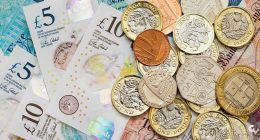
Summer road trips and a pullback in crude prices have pumped up refineries’ profits, offering brighter prospects for one part of the global oil complex despite rising worries about Covid-19.
Oil prices have grown choppy in recent weeks since China, the world’s biggest commodities consumer, imposed restrictions to contain the Delta coronavirus variant. A decision by the Organization of the Petroleum Exporting Countries, Russia and the cartel’s other partners to pump more oil is also weighing on crude markets.
Prices for West Texas Intermediate, the main grade of U.S. crude, are down more than 10% from their 2021 high, trading at about $66.59 a barrel.
The retreat is weighing on shares of energy companies including Exxon Mobil Corp., but is a potential boon for refiners such as Marathon Petroleum Corp. Refiners stand to gain when gasoline and other products they produce fetch higher prices than the crude they purchase.
Refiners had already benefited from a summer surge in gasoline demand that pushed average pump prices above $3.15 a gallon. Investors haven’t rewarded their share prices, however, in part because of rising costs for meeting environmental rules.
Refiners play a key role in energy markets, processing crude oil into fuels for transportation and heating, as well as petrochemical ingredients and products such as asphalt. When profits at refiners rise, the companies typically crank up production, lifting demand for crude.
One gauge of U.S. refiners’ profit margins—the gap between the price of gasoline and crude futures—stood at $25.41 a barrel Tuesday. That was close to the highest level for this indicator, known as the crack spread, on FactSet data dating back to 2016.
Refiners have revved up operations. In the four weeks through Aug. 6, they ran at about 91% of capacity, according to the U.S. Energy Information Administration, compared with less than 80% a year before.
Higher gasoline prices came into the spotlight this month when the White House urged OPEC to open the spigots. It also asked the Federal Trade Commission to monitor the U.S. gasoline market.
SHARE YOUR THOUGHTS
What is your outlook on the oil market for the rest of 2021? Join the conversation below.
The jump in crack spreads isn’t all feeding into refiners’ bottom lines. To varying degrees, companies are contending with a leap in the cost of renewable identification numbers, which are credits that refiners buy if they don’t meet mandates for blending biofuels into transportation fuels.
That is one reason why refining stocks haven’t all rallied in line with crack spreads, said Dhruv Kharbanda, an analyst at Tudor, Pickering, Holt & Co.
Shares of Marathon, which has been buying back stock with the $21 billion it earned from selling its Speedway gas-station division, have gained 38% in 2021. Phillips 66, on the other hand, is flat for the year and executives at the Houston-based company said higher RIN costs contributed to a loss at its refining unit in the second quarter. Valero Energy Corp. has risen 12%. In comparison, the S&P 500 has gained almost 20% this year.
The energy sector is among the best performers on the broad stocks gauge this year, having benefited from a vaccine-fueled recovery in demand. Still, Exxon shares have fallen 14% since mid-June as crude prices have turned volatile, while Chevron Corp. has shed 10%.
Nonetheless, analysts say rising crack spreads are a welcome turn for refiners after a dire year for the industry in 2020, and will likely buttress crude demand in the coming months.
Marathon reported $751 million in profits in its refining and marketing division in the second quarter, up from $23 million in the first and a loss of $919 million a year before. Valero, meanwhile, posted $361 million in adjusted operating income in its refinery business, swinging from a loss of $383 million in the second quarter of 2020.
Crack spreads will automatically fall in the coming weeks when refiners switch to producing cheaper winter blends of gasoline, said Nicolas Robin, a fund manager at Columbia Threadneedle Investments. Still, he expects gasoline demand to remain strong, in part due to behavioral changes set in motion by the pandemic.
“There will still be a bias to drive a car as opposed to taking public transport,” Mr. Robin said.
Write to Joe Wallace at [email protected]
Copyright ©2021 Dow Jones & Company, Inc. All Rights Reserved. 87990cbe856818d5eddac44c7b1cdeb8
This post first appeared on wsj.com









